Watch Now: 8 Tips for Great Healthcare Customer Service
Not sure how to deal with patient inquiries, how to make booking more efficient, or how to ensure that you capture new patient leads? Assumptive booking and conversations with your team about which communication channels to prioritize can help streamline processes for your practice. Most importantly, make sure that you and your team understand your healthcare practice’s customer service values so training is meaningful.
Learn from proven examples of excellent customer service in healthcare, so you can offer better service and credential your practice when faced with any potential patients.
Video Transcription:
Hi, my name is Ryan Miller, with Etna Interactive. We’re going to talk today about great customer service. Now I understand that customer service is going to, well, have different expectations in different offices.
What we’ve seen in the last 20 years, through direct observation of reception and call center operations, well, observation of emails, listening to recorded customer service calls, and more recently through direct review of SMS chat logs, live chat logs, and interactions through public and private social media messaging, is to observe some of the best practices from some of the nation’s best medical practices and distill them down to, well, 8 tips that you can use to enhance customer service for your practice.
Now, this particular video is meant to be observed with your team, to gather together, review these principles, and then at the end, engage in a form of discussion. You can certainly watch it as an individual, but I think you’ll find that it’s more rewarding to reach a shared understanding of the customer service values for your office.
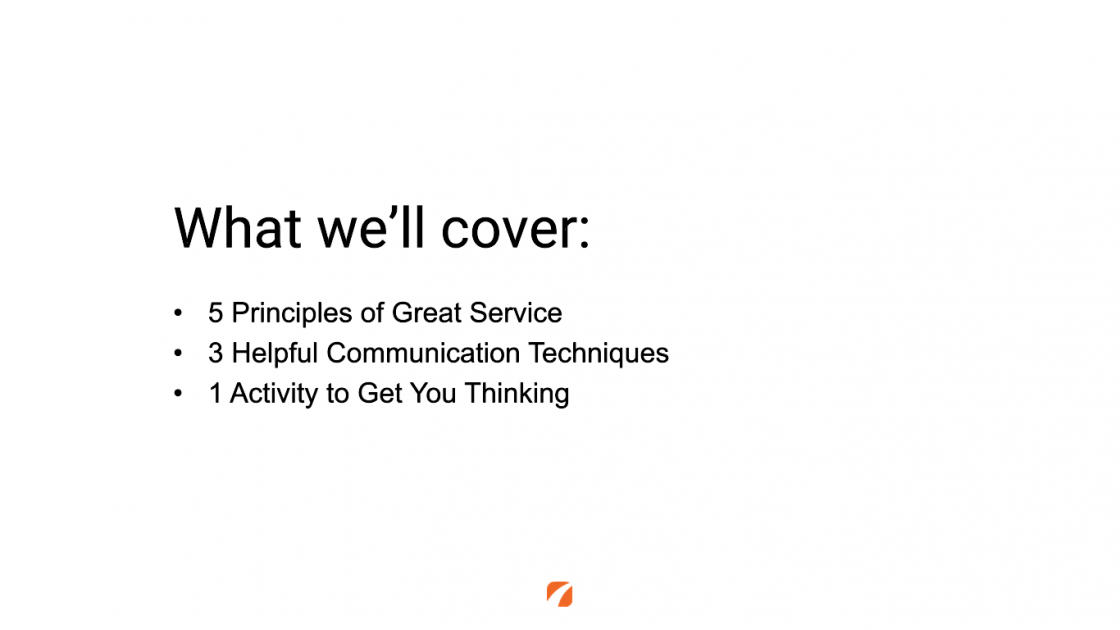
Here’s what we’re going to cover today. We’re going to talk about 5 principles that we’ve seen to be universal that typify great service from medical practices all over North America.
We’ll take a deep dive in and share 3 techniques, tips that you can use to up your customer service game. And then finally at the end, we’ll have a series of activities that you can choose from, ideally working with a group, but you can do them alone as well, to explore and expand on your thinking about customer service for your office.
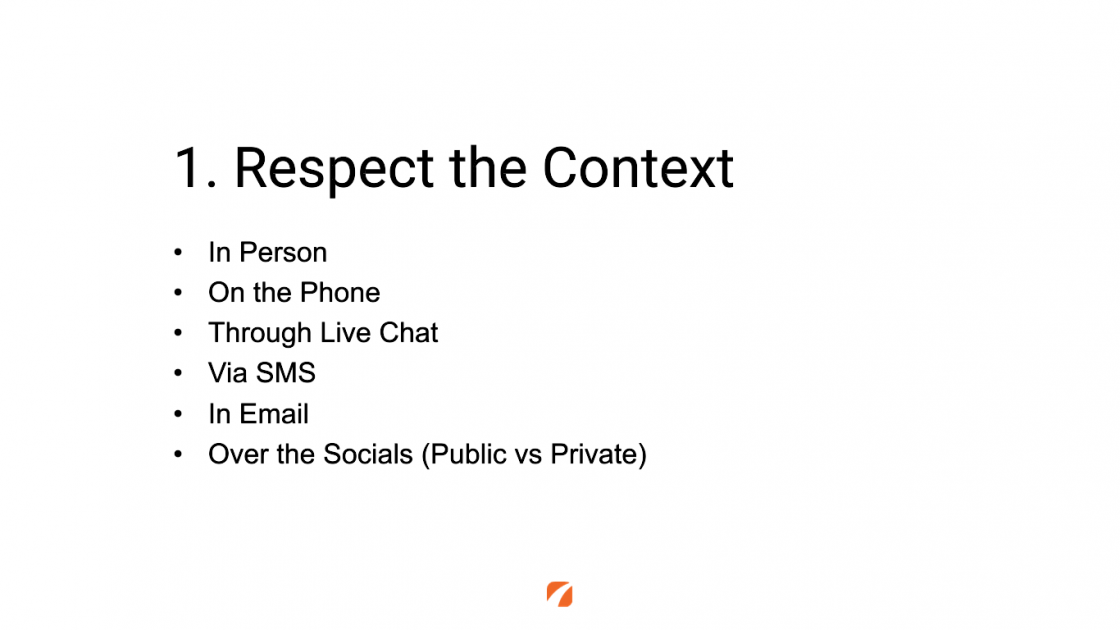
So, let’s talk about those 5 principles first. The first of which is respecting the context, and honestly this is something that’s fairly new in the customer service arena. For a long time, we thought about the patients standing directly in front of us and maybe a phone that was ringing or an email that needed some attention. But today we’ve got to think about the nuances of communicating to patients through SMS, through live chat, in public and private forums like social media, through responses and commentary that are coming into your blog. And each of these communication channels has a slightly different context.
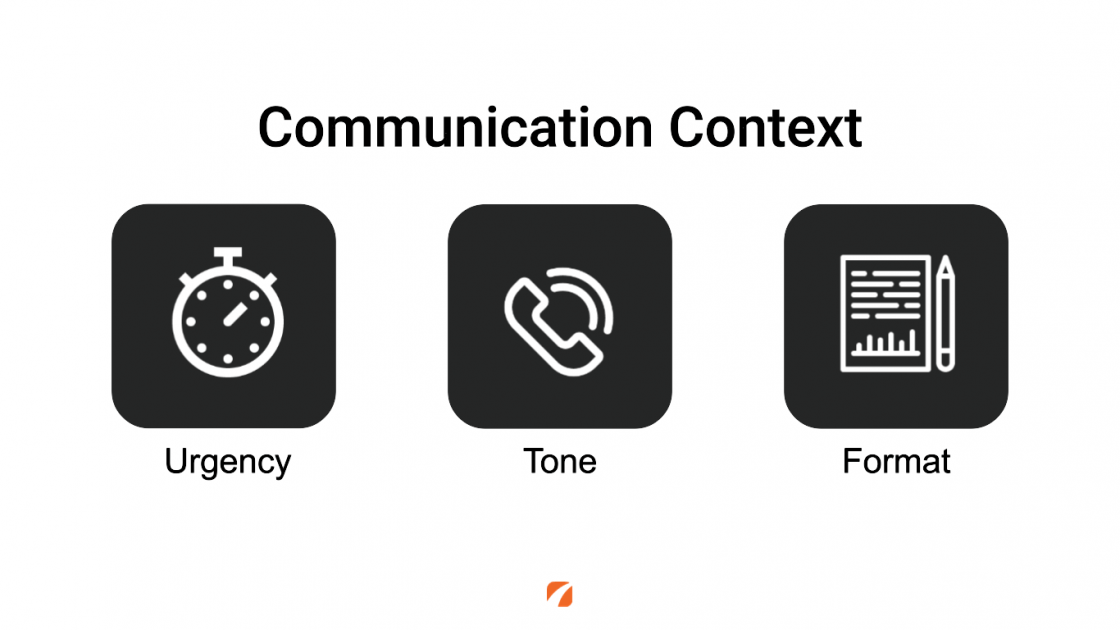
First thing we have to think about is urgency. Some things, like a patient standing directly in front of you or a live chat, have implied urgency. There’s somebody on the other end engaged in a direct conversation with you, who would feel a little put off if you just stood up and walked away.
Other channels, like email, which are asynchronous, a patient sends you a message and you’re going to get back in touch with them when it’s convenient, have some urgency attached to them but you generally can afford several minutes or a few hours before you get back to that patient inquiry.
Next, we have to think about tone. Probably, as you were being brought up or trained in the customer service world, you were trained towards more formal communication in writing and in speech with patients. Today as we engage with patients on channels like SMS where emojis are really common, it may be appropriate to tone down some of the formality to meet patients where and how they’re communicating with you.
And finally, format. Emails tend to have longer format. Formal introduction, several paragraphs where you dive into answering the patient’s inquiry, salutation, and a full signature block. And if you included all of those things in a text message, you’d blow up a patient’s phone and it would be next to impossible for them to scroll through all the information you’d replied. So, you’re probably going to have to adopt a format that’s more direct. So, think about the context before you communicate, and you may need to adapt the practices you’re using today.

Second, as a principle, use positive language and keep a positive attitude. Instead of saying no, how do we offer a resolution to a patient’s inquiry?
Consider this example, somebody writes or calls in and says, hey can you fit me in with a treatment with Nurse Sue this Thursday? Implied in the communication is some degree of urgency and the desire to see Nurse Sue.
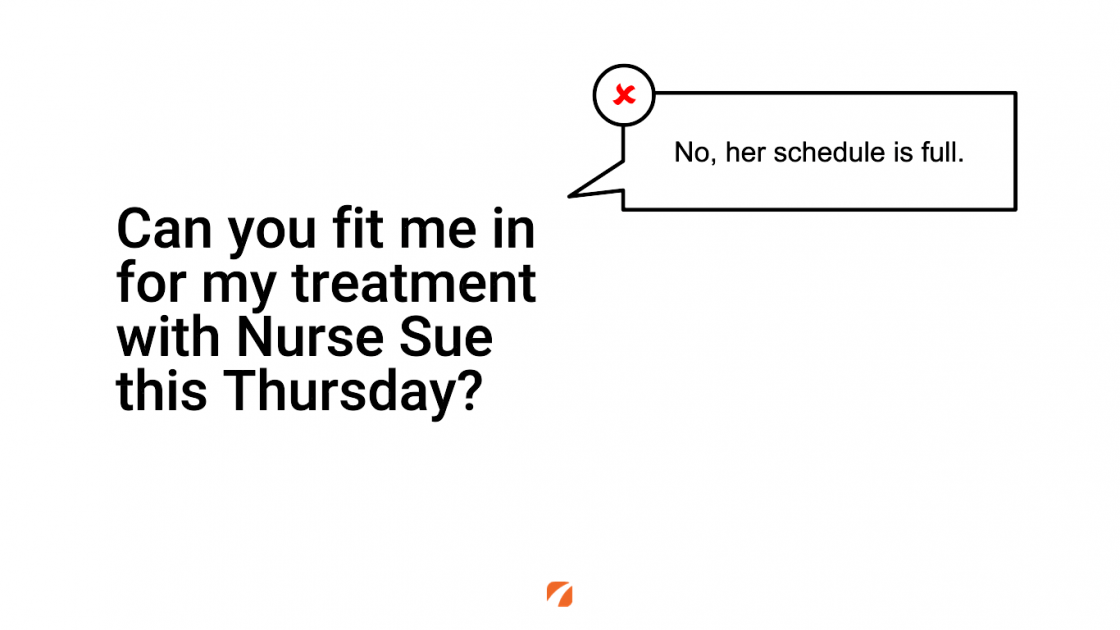
I can’t tell you how many times we’ve observed communication replies that sound like this: no, her schedule is full. That wasn’t really what the patient was asking. They’re asking how do they get in as quick as possible with Nurse Sue.
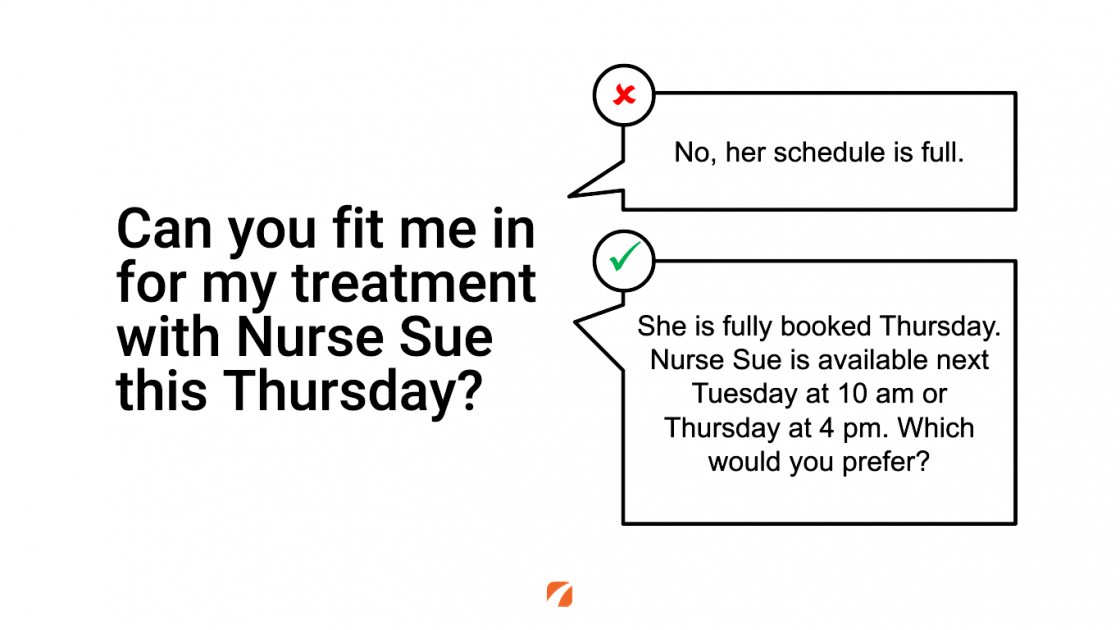
Instead, consider answering with a positive affirmation back: while you’re sorry, “I’m sorry that Nurse Sue is well, she’s fully booked,” but you have a solution, “Nurse Sue is available next Tuesday at 10 am or next Thursday at 4 pm. Which of those two appointments do you prefer? We want to get you in to see her as quickly as we can before she books out even further.” Right? So, we’ve solved the patient’s problem even though it wasn’t a direct response to the patient’s question.
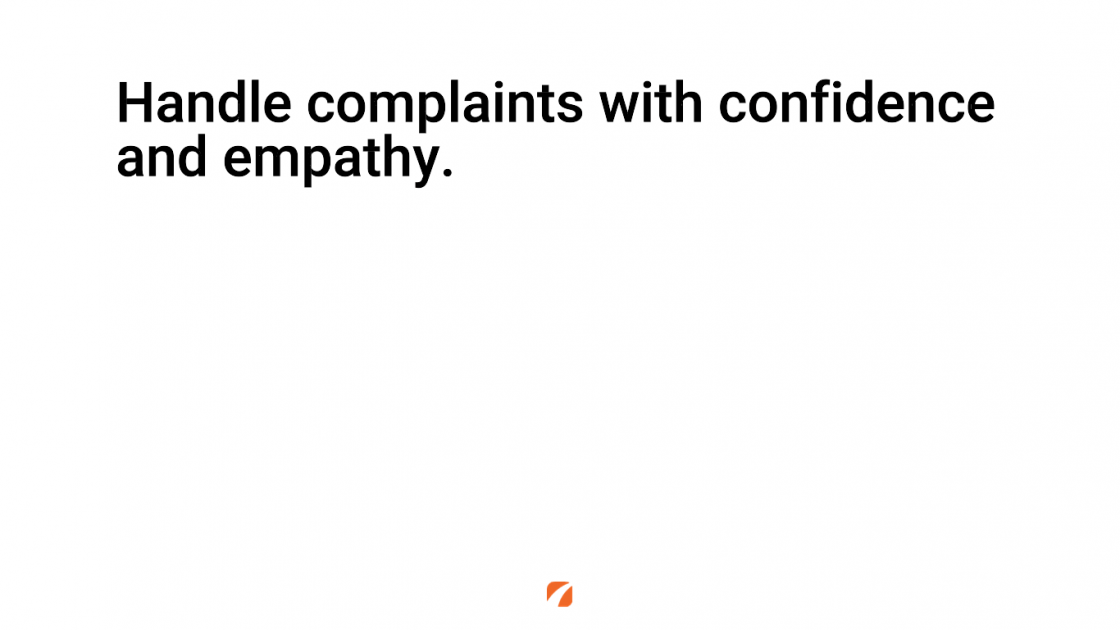
And we know that sometimes as a customer service representative you’re going to come under fire. And that’s okay, but we want you to feel empowered to reply with confidence and with empathy in all of those situations. So, you can use this technique, one of these two phrases to help move you from a place of angry exchange to the place of working on the solution.
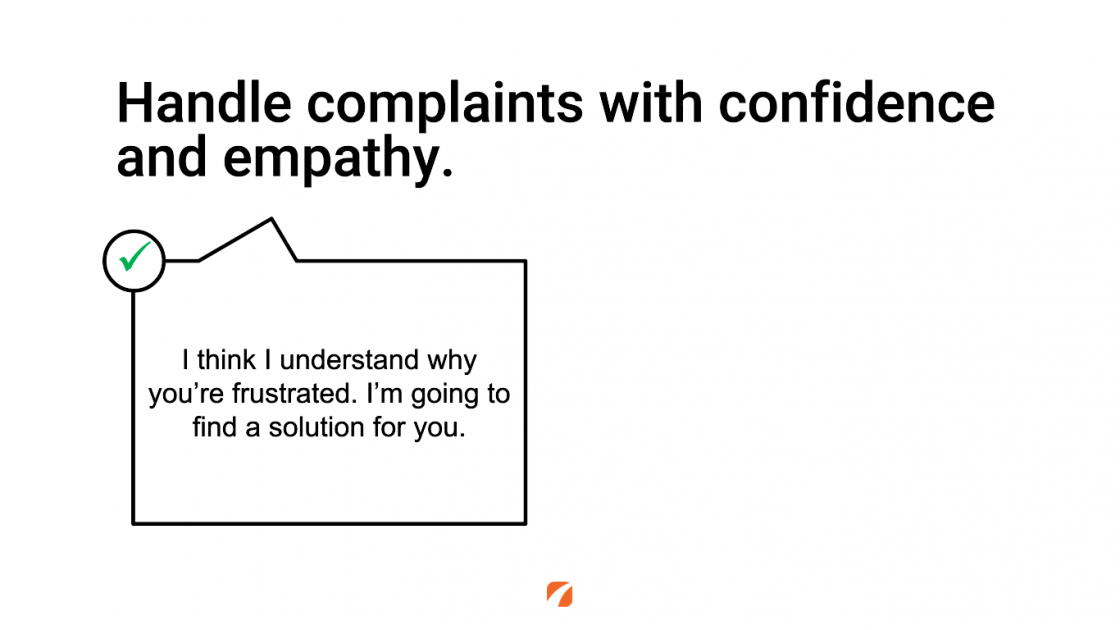
You might say, “You know, I think I understand why you’re frustrated. Now I’m going to find a solution for you.” That language where you’re committing personally to help them get a solution and then you stick with them until it’s done.
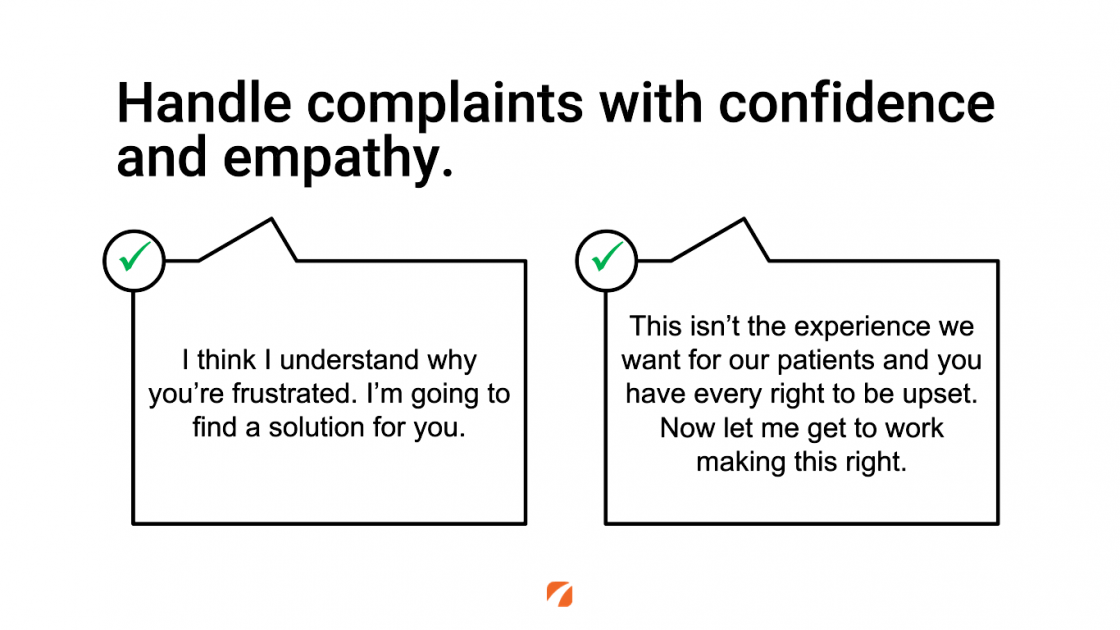
Alternately, you can definitely explain to the patient, “Wow, that thing that you just described, that is not the experience that we want for our patients, and you have every right to be upset. Now, I’m going to get to work to make this better for you.” Right? So, we’re pivoting away from the negative after acknowledging it, toward working on the solution.
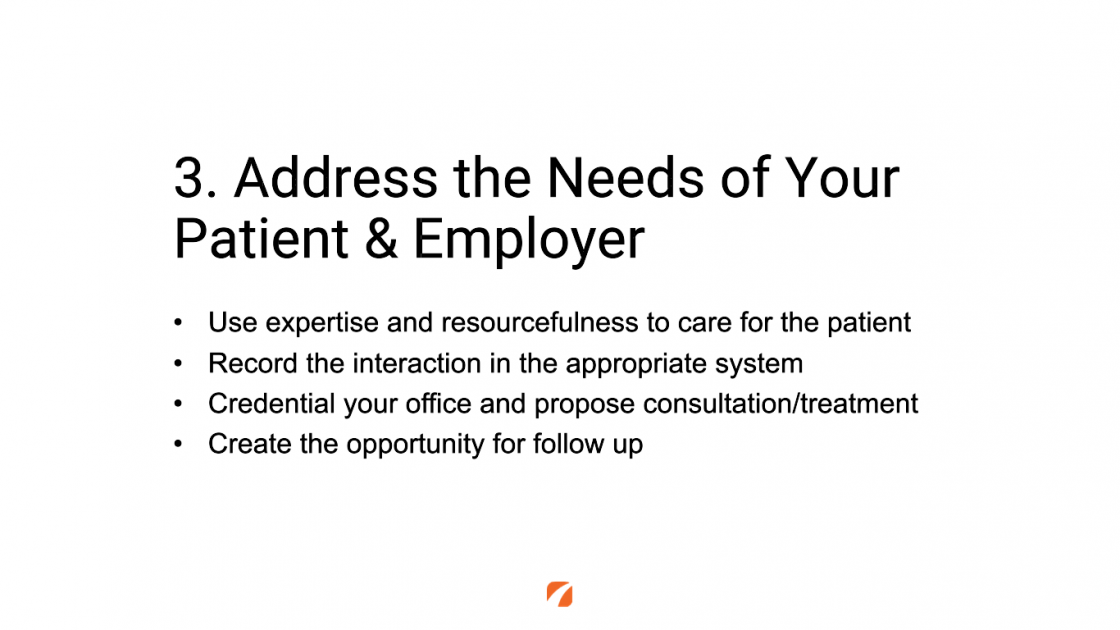
The third principle is make sure you address the needs of the patient, but also take the time to address the needs of your employer.
So, when that patient wrote in just a moment ago to ask to see Nurse Sue, there’s a couple things that are implicit in the communication. They’re asking for Nurse Sue by name, they’ve probably seen her before or received a direct referral, but if that caller wasn’t already in your system after you address the question, you need to make sure that you record the interaction. Because there’s no way for your employer to continue the communication with that prospective patient that they paid so much to get to call in or write into the practice if you don’t take the time to capture their information. Right, at the very least, the name, the phone number, the email address, and the procedure or area of interest for that patient, so that you can use tools to continue to communicate with them in the future.
In addition to that, we want to take the time to credential the office and for most clinics, it’s appropriate at somewhere in the call after you’ve qualified the patient to propose either a consultation or a treatment. One or both of those is going to be appropriate inside of most offices. And, well, the call feels a little bit lacking if the patient has expressed significant interest and you haven’t offered to have them come into the office.
And then finally, we want to create some kind of opportunity for follow-up, especially when we don’t succeed in booking an appointment during the interaction.
So, for example, for a patient who, during your call, asked about prices or was interested in specials, you might close your call by saying “You know Beth, you mentioned during the beginning of the call that you were interested in finding the best possible deal,” – in let’s say Botox – “while we don’t offer very often specials and discounts, that’s just not the practice we are given the quality of our service and the experience of our providers, on the rare occasions that we do, we always announce them to our email newsletter or our followers on social media. Can I subscribe you to our email newsletter now?”
Right, so we’ve taken that opportunity to show that we were listening, that we’re caring about her interests, and we’re creating a vehicle for our practice to communicate with that patient into the future.

So let’s take a step back and let’s assume that we get hit with a negative call and that patient starts out with “So, I’ve already called about this three times…” and you hear the exasperation in her tone. What do you know right away about this patient? Well, she’s in a disgruntled state and she’s looking for someone to follow principle four. To take responsibility and be accountable for the resolution.
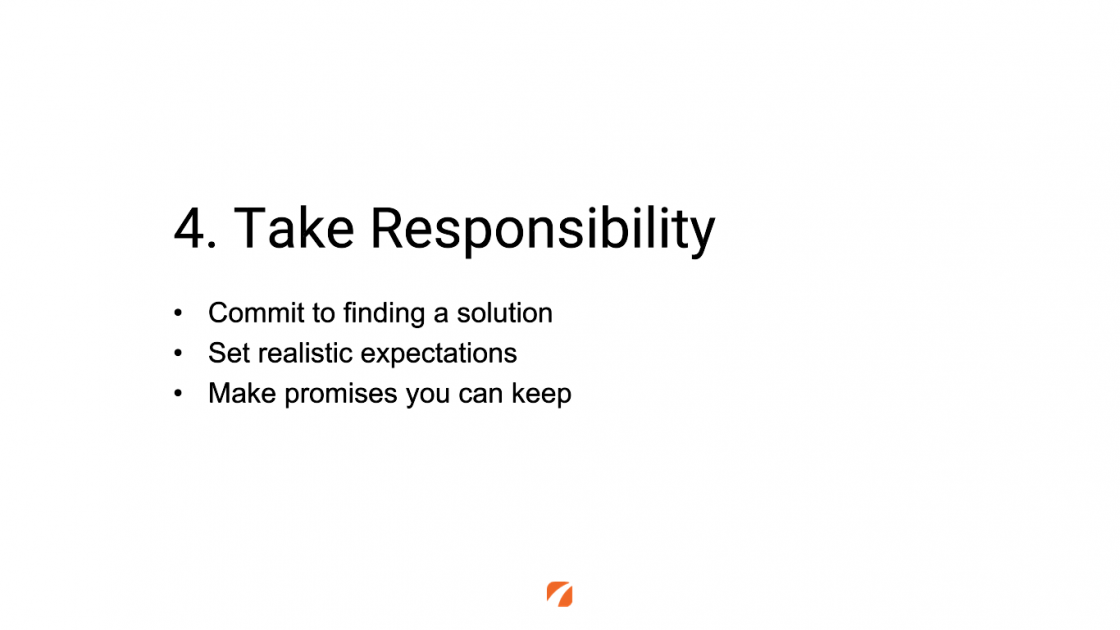
So, you need to commit personally, the best customer service agents do, to finding a solution for that patient. And certainly, if the solution resides outside of your immediate control, to set realistic expectations and make promises that you can keep about how you as an office team are going to wrap around that patient and make sure that their particular need is met.

The fifth and final principle of really fantastic customer service that we’ve seen all over North America is this one. And it’s about affirming what you heard in the call and then closing with well, what the patient should expect next.
So, this idea of call recap is something that takes practice, if it doesn’t come naturally, I recommend you start trying or testing it out right away.
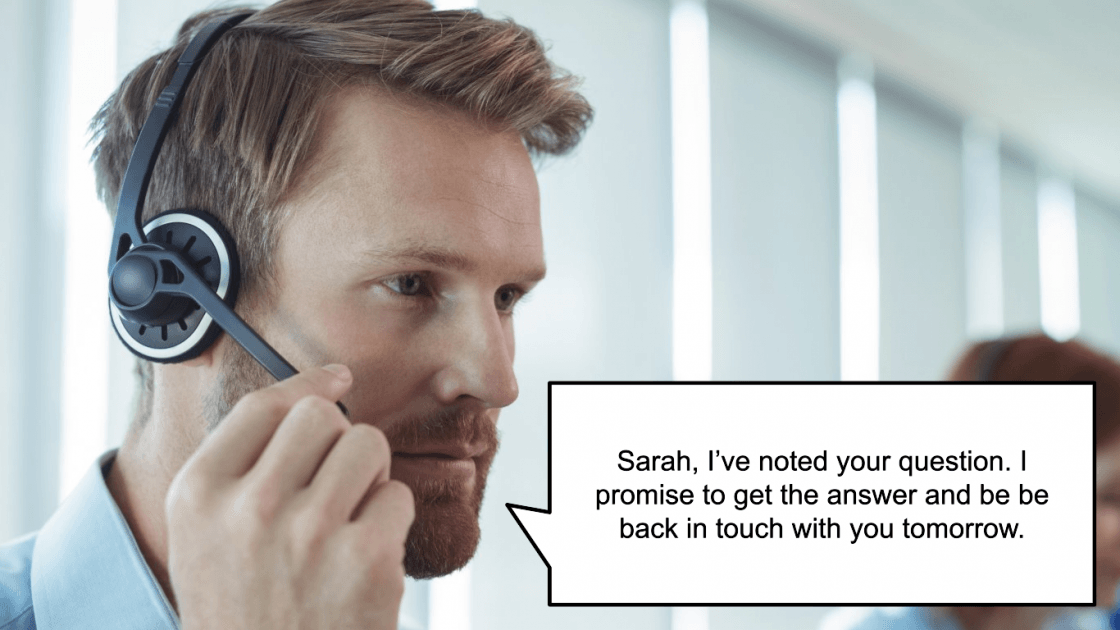
And it might sound like this, in an instance where you started a call but you’re not going to be able to help the individual directly, you let Sarah know that ‘I’ve noted your question and I promise that I’m going to get the answer for you and be back in touch by tomorrow. Sarah, the number I have down for you is,’ and you read it back.
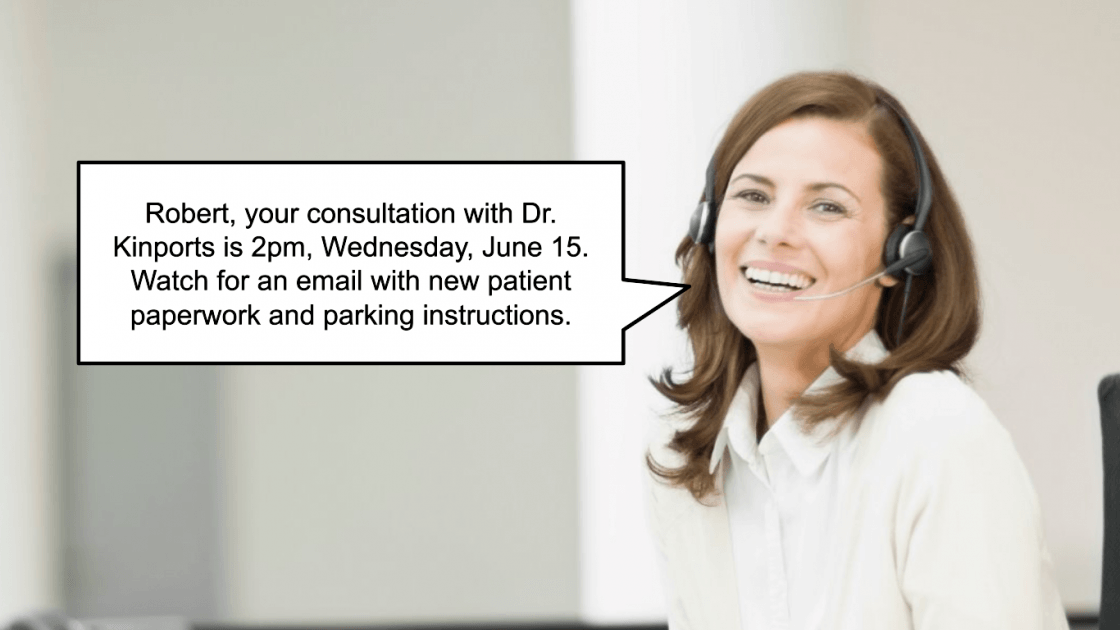
Or if you’ve been successful in booking an appointment, you might say “Robert your consultation with Dr. Kinports is at 2 pm on Wednesday, June 15. Is that what you wrote in your calendar? Perfect! Now a couple of things I want you to know, I’m about to send you an email that includes our new patient paperwork. If you fill that out before you come in, you don’t need to arrive early. And Robert, I’m sorry, I don’t remember, have you been to our office before? No? Okay, well new patients tell us sometimes that parking can feel a little bit difficult, so in the email I’m sending you, I’m including some parking instructions so that your first experience goes as smoothly as possible.”
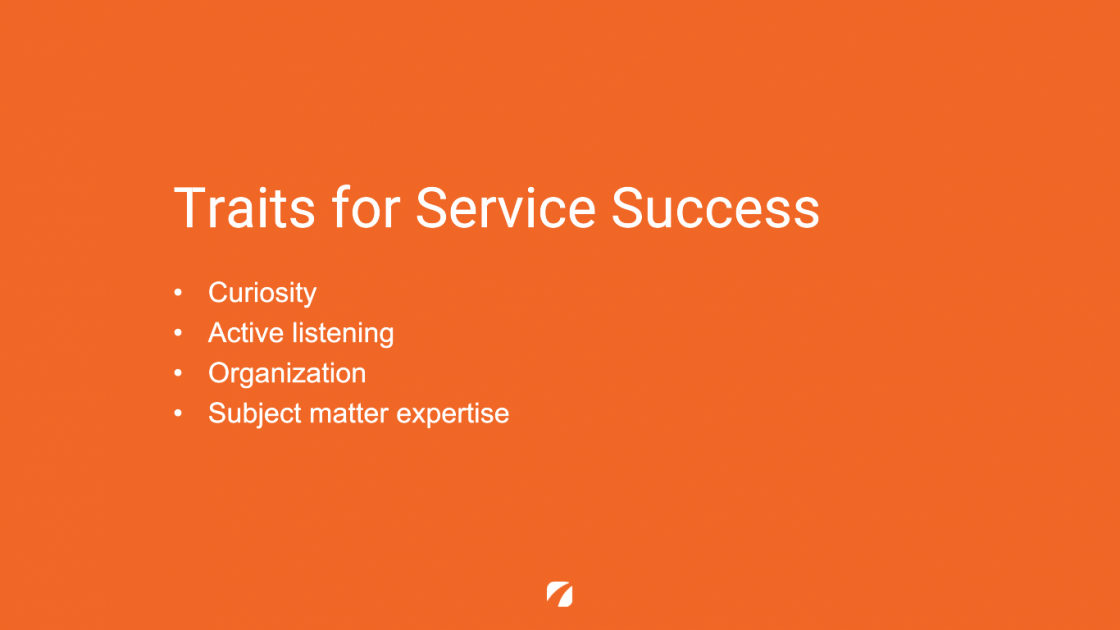
Right, now there are certainly traits that are, well, natural for the best customer service agents, like curiosity, active listening, strong organization skills to capture all those notes and be able to do effective recaps, and of course subject matter expertise.
But there are some tricks that can make any of us really fantastic customer service representatives. We’re going to go through three helpful techniques that we think that you can use to well, to notch your game up just a little bit right away. One of them is mirroring.

Mirroring is simply the skill to be able to match the tone, the cadence or speed, and the particular language choices of the person that you’re interacting with. If you’re for example on a call and you have an individual who is abrupt, and using words like “I’m in a hurry” and “I need to get this done,” match their speed, speak a little bit quicker, talk in more definitive tones about how you’re going to help them get that appointment scheduled or that particular need met, and allow them to get back to their day as quickly as possible.
Now, contrary to that, if you’ve got a patient who is a little quiet, a little reluctant, perhaps uncertain to be calling into an elective medical practice for the first time, bring your own tone down. Slow things down just a little bit, even if you’re busy, and meet that patient where they are so that they can feel that natural vocal connection with you.
You can mirror in digital communications as well by observing, well, the level of sophistication in the patient’s email or their SMS message and using similar levels of structure, similar levels of detail to the information or inquiry that they’re sending into your practice.
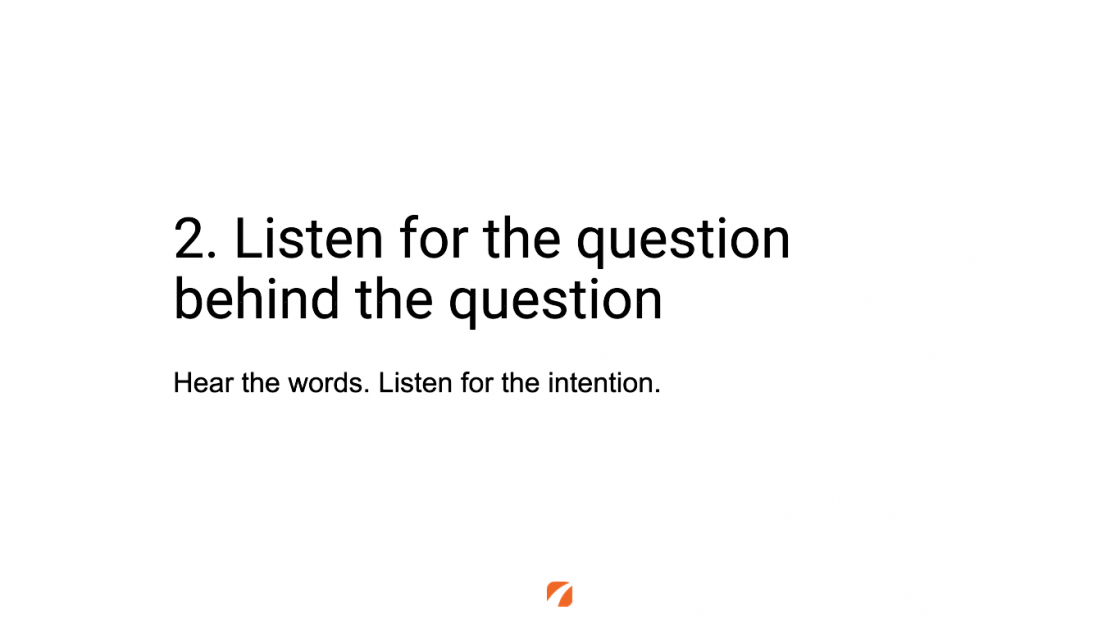
The second skill, or technique that you can perfect is listening for the question that’s behind the question. So, you can hear the patient’s words, but what you’re really listening for is the need, the intention, the problem that you’re going to be in a position to solve.

Consider this example, you get a live chat from a patient that says ‘do you offer JEUVEAU®?’ Which is a fairly new neuromodulator, it’s a competitor to BOTOX®. And presuming that it wasn’t something that was offered inside of your office, you could choose to just say “No.” and end the interaction.
But probably, you could do a lot better by acknowledging that the underlying intention is that this is a patient who is interested in newer novel therapies, perhaps into the latest and the greatest, has maybe heard about JEUVEAU from the media or from a friend, but still has the underlying problem of dealing with those dynamic wrinkles.
And you can reply back to the person, “While we do not carry JEUVEAU at this time, we are our state’s number one, number two, top ten, top fifty provider of BOTOX Cosmetic, the leading neuromodulator in the space, and we believe there are some significant reasons you should choose both us, and BOTOX Cosmetic. So, can I set up a time for you to talk to one of our consultants?” Instead of hitting the patient with a negative, we heard the underlying intent and we at least tried to create the opportunity to continue that conversation.
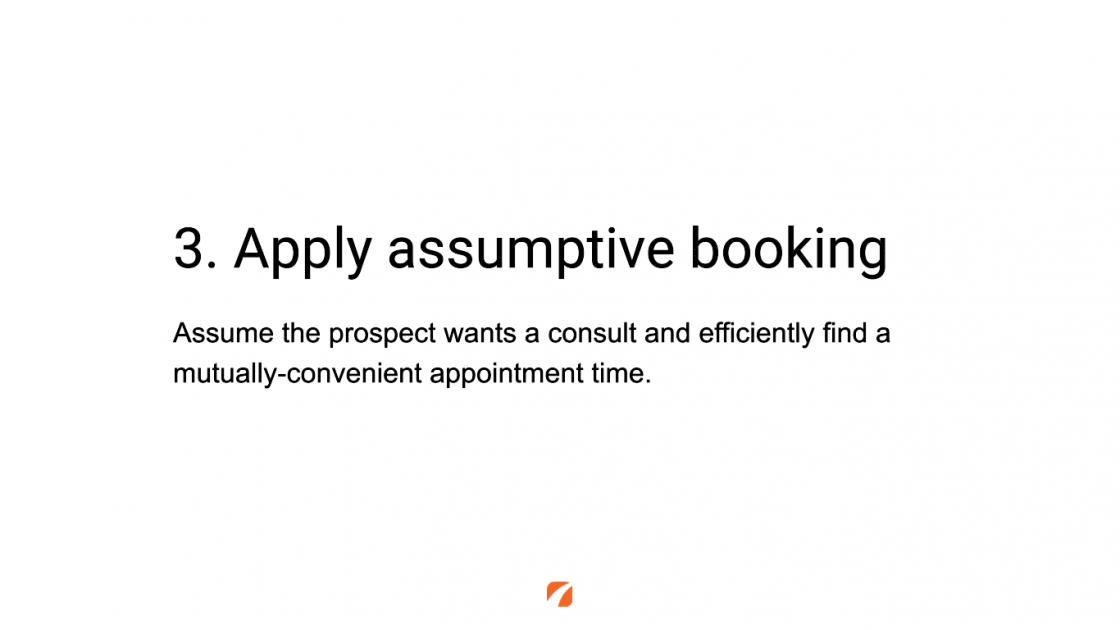
Third, and finally, in terms of techniques, and I think it’s one of the ones that’s most powerful, is applying what’s called assumptive booking. The idea that, well, the patient definitely is going to want a consultation and there are a few simple ways that we can get them there quickly.
What’s interesting to note about this last technique is that we’ve studied and looked closely at the negative reviews that are left by patients all over the internet on sites like Google and Yelp. One of the most common themes is patients complaining about the difficulty in booking.
Now, certainly, some of that is attributable to the complexities of managing office software for calendaring and appointment scheduling, but a lot of it I think based on the calls that I’ve listened to and the emails I’ve observed is about a challenge that some practices have in communicating their availability. Assumptive booking is really three simple techniques. I’ll walk you through the steps and I’ll let you hear what it sounds like.
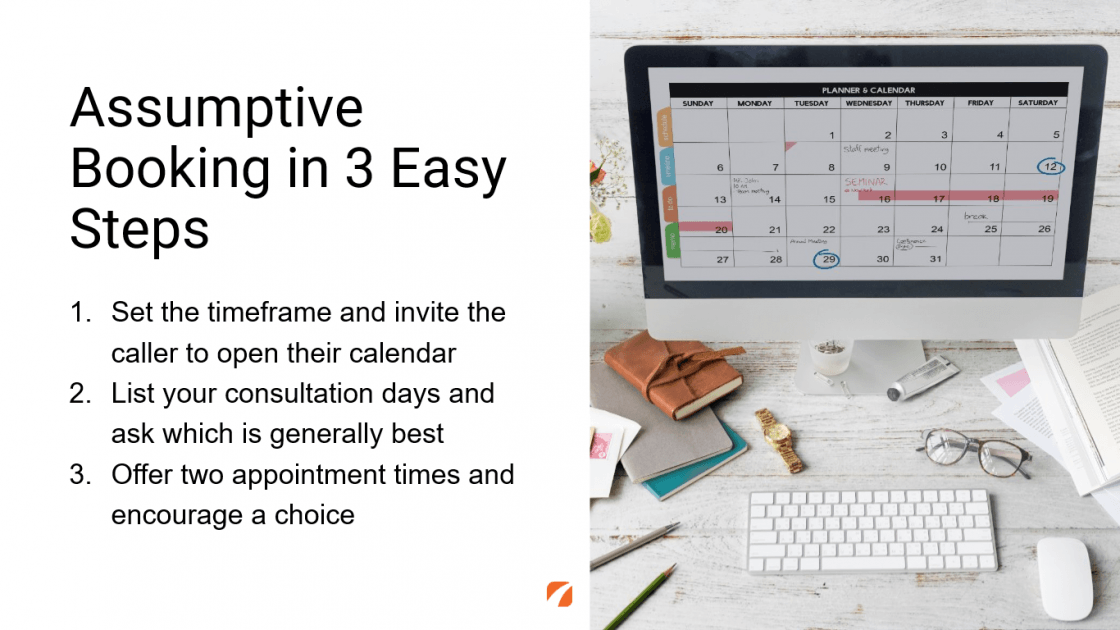
First, you’re going to set a timeframe and you’re going to invite the caller to bring their calendar out into the open. Second, you’re going to list the days that you offer consultations or the treatment that the patient is looking for and ask which of two options is generally best. And then finally, you’re going to offer two appointment times, your next available ones on those dates so that the patient can choose one of them.
It might sound like this, “Now Beth, right now we’re booking consultations about four or five weeks into the future. Can you take a moment to just pull your calendar out so that we can find a time that’s going to work for both of us? Now Beth we offer typically our consultations on Tuesdays or Thursdays. Reflecting on your schedule most generally, which of those two days is most often best for you? Oh, Tuesdays? Perfect. Beth, looking ahead, looks like about five weeks out, I have two appointments that are available on Tuesday, July 7, one is 10 am, the other is 4 pm. Which is going to be better for your schedule?” And you’ve allowed yourself to quickly zoom in on a day and a time that’s going to be acceptable to Beth so you can more quickly get her on the calendar.
Now in the event when you say you’re booking four or five weeks out, and Beth balks, “Oh, I didn’t realize I’d have to wait that long,” it’s a wonderful opportunity to credential your practice and offer a solution. “Beth, I heard your reaction when I said that we were booking four or five weeks out, it’s you know, it’s because Dr. Kinports is in such high demand. At the end of this call once we’ve booked your consultation, it sounds like you might want to be on our waitlist where we could call you to get you in sooner if there’s an opening in our schedule, would you like that as well?” Right, so we’ve taken what was potentially a negative and turned it into a positive.

So, here’s the last activity that we’re going to invite you to. Now that you’ve listened to the principles and the techniques that can help you elevate your service game, now’s the chance to open into a discussion. Either an individual reflection or more ideally after having watched this video with members of your team to share in your experience and your observations.
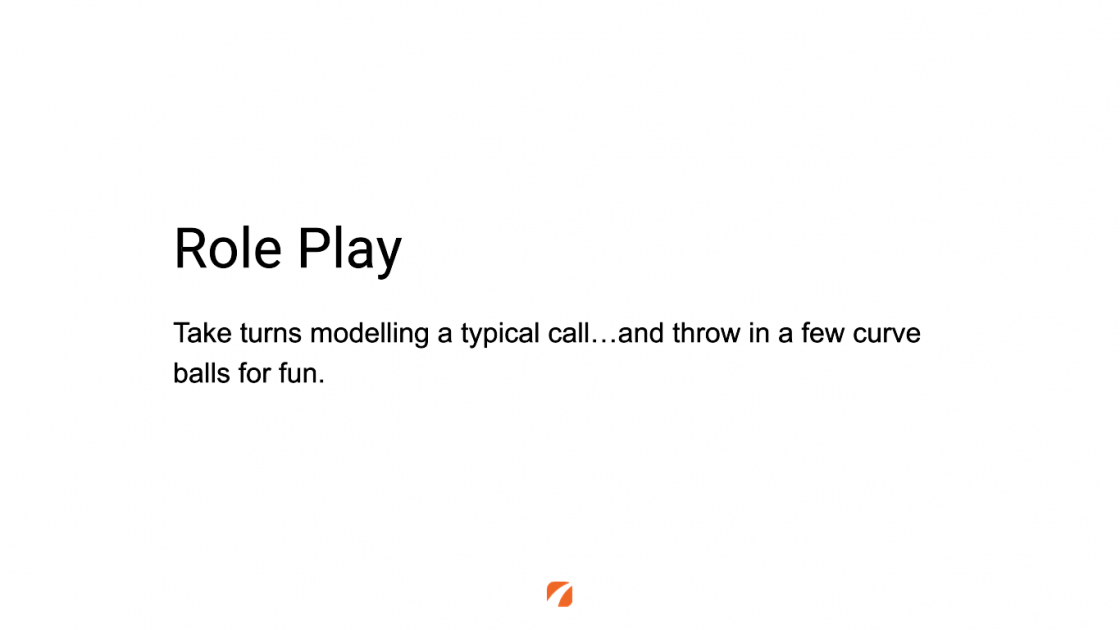
The first activity you could choose would be to roleplay, and I realize that role-playing can be a little bit awkward at times, but I think it’s incredibly powerful to find those words, hear what they sound like when you project them into the world, and potentially edit them as you get feedback from members of your team.
A great thing to do is to role-play the typical call and it’s okay to throw each other a few curve balls inspired by some of the harder calls that you’ve experienced in the last few weeks or months.
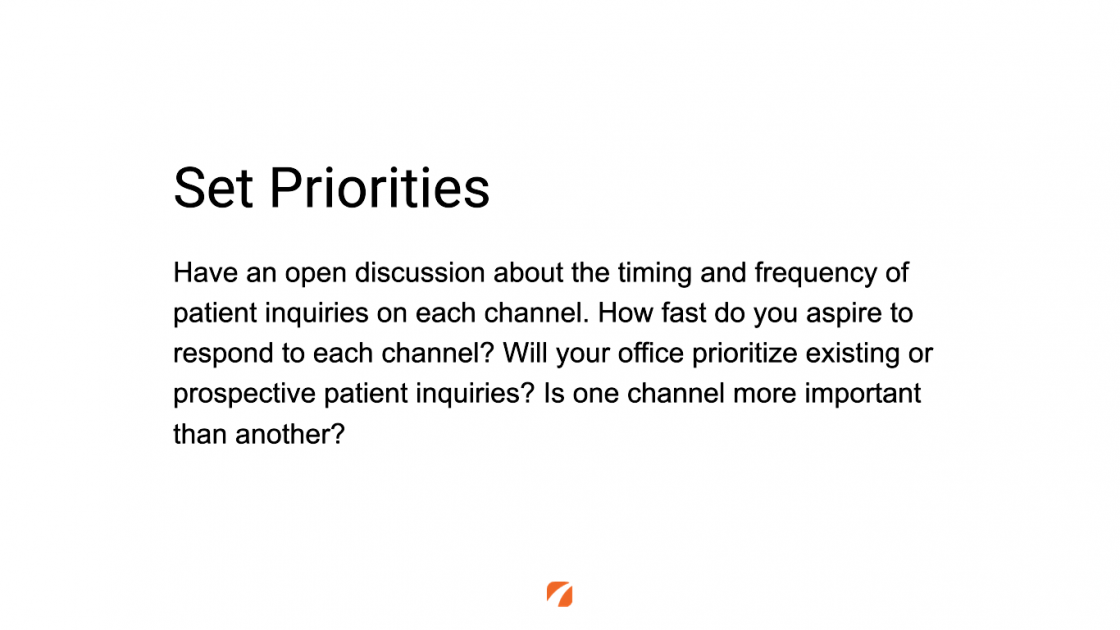
Well, the other thing you can talk about is a discussion about setting priorities. Expose to the members of your team, especially to members of your leadership where, and how, and when you’re getting the most inquiries from patients and prospects.
Do you find that you struggle each morning to deal with the deluge of inquiries that came in overnight by email? Are you struggling to figure out how exactly to address the needs of patients on social media? Do you have a few hours during the day, often we see around and right after the lunch hour where the phones are flooded, and you need more help? Exposing those ideas and then starting a discussion around which channels will get our attention first? Do we address the person in front of us before we deal with last night’s emails?
Those communications are going to allow us to set expectations around who’s going to get our attention and what areas we might need to examine appropriate staffing or training to meet our customers’ needs.

The third activity you might engage in is just sharing stories. Take the time to talk about, not necessarily in your office, but the best or worst customer service experience that have been had by members of your own team and describe what were the specific characteristics or traits of those experiences that made them the best or worst, to look for ways that you can apply those ideas to your own customer service.
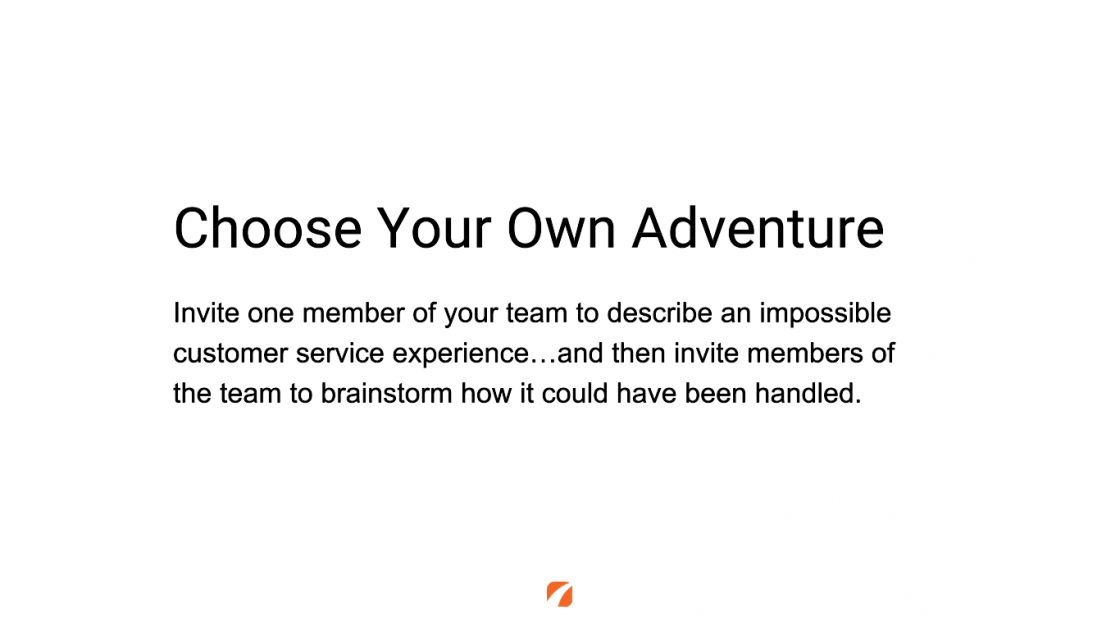
You could choose your own adventure. Invite one member of your team to describe an impossible customer service experience. One that just felt like it was a lose-lose, and then open yourself up for other members of your team to share ideas back for how that situation could be handled in the future to potentially a better outcome.
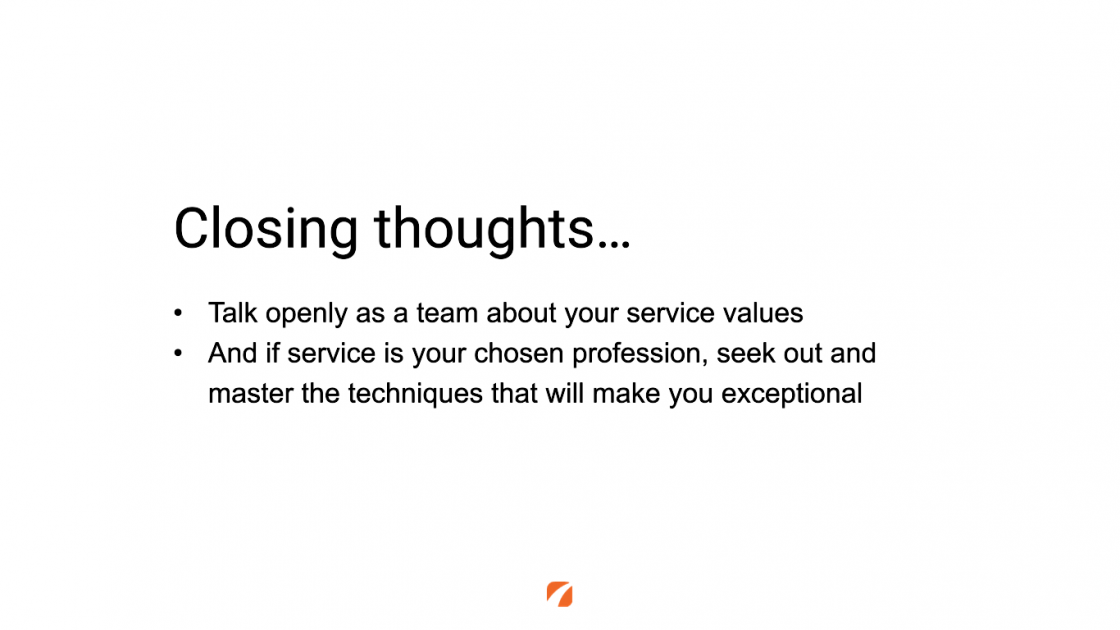
Now, I have some closing thoughts, I think it’s critical, that as a team, as an organization, you talk about your service values. The aspirations that you have set for how you are going to service customers who are calling into your clinic. And if you personally have chosen customer service as your career path, that you continue to seek out opportunities like this to master techniques that will make you ever a better customer service agent.
So, if you’re watching this on YouTube, or you’ve captured it on our blog, take a moment to share your tips or your advice for how to elevate customer service inside the elective medical office in the comments section down below. Have a great day!
Additional Resources:
Want to learn more about how to improve customer service in healthcare?
We have produced these additional resources to help you and your team offer the best in healthcare customer service:
- A Practical Guide to Supporting Virtual Patient Appointments
- Before They’re Patients: How To Keep the Conversation Going
- Improving Conversion and Quality From Your Online Patient Inquiries
- Smart Practices Track Their Calls
- The Experts’ Guide to Lead Nurturing Tactics


Leave a Comment